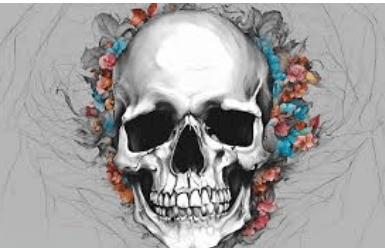Drawing:Oldj_7nsvxk= Skulls

The art of drawing skulls presents a unique opportunity to engage with both anatomical precision and artistic expression. By examining the intricate structure of the skull, artists not only enhance their technical skills but also deepen their understanding of its cultural and symbolic significance. The interplay between realistic representation and personal style invites a multitude of creative interpretations. As we explore various techniques and inspirations, the question arises: what deeper narratives can be conveyed through the portrayal of this timeless subject?
Read more: Drawing:Nl2qdfgosl0= Scream
Understanding Skull Anatomy
A comprehensive understanding of skull anatomy is essential for artists seeking to accurately depict the intricate structure and proportions of the human head in their drawings.
Knowledge of skull structure reveals how various bones interconnect and support essential functions, such as protecting the brain and facilitating facial features.
This understanding enhances an artist’s ability to create lifelike representations that resonate with viewers on multiple levels.
Techniques for Drawing Skulls
Effective techniques for drawing skulls involve a combination of observational skills, structural analysis, and practice to capture the nuances of form and perspective.
Utilizing shading techniques enhances the depth and realism of your drawing, while mastering perspective drawing will allow for accurate representation of the skull’s three-dimensional qualities.
Regular practice and study of anatomical details will further refine your artistic abilities.
Read more: Drawing:Nl2qdfgosl0= Ghostface
Styles and Inspirations
Exploring various styles and inspirations can significantly influence the way artists approach skull drawing, allowing for unique interpretations that blend traditional techniques with contemporary creativity.
Artistic influences from different cultures enrich this genre, incorporating cultural symbolism that transforms skulls into powerful motifs.
Conclusion
In conclusion, the art of drawing skulls serves as both an exploration of anatomy and a medium for creative expression.
The intricate structure of the skull, consisting of 22 bones, offers artists a unique opportunity to capture the complexity of human existence.
Moreover, studies indicate that artistic representations of skulls can evoke a range of emotional responses, highlighting their profound significance across cultures.
This interplay between art and anatomy continues to inspire and challenge artists worldwide.




